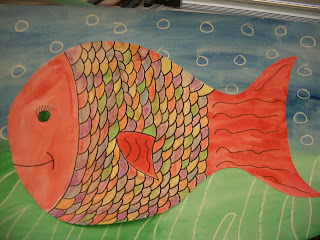
For this project we started with an 8 X 10 sheet of white paper. Using a light blue colored pencil we drew a picture of an animal, however we were required to draw it upside down. The purpose of this was to focus on the lines, not the image. After completing the drawing, using warm colored crayons (red, orange, yellow, pink) you cover up the drawing with patterns. Once this was done we created a special pair of glasses using red cellophane. When you wear the glasses you can see the hidden picture.
Extension Activity:
For this activity I would incorporate it into history while discussing code breakers in war time. Instead of drawing a picture you can write a message or create your own secrete code using symbols.
For this activity I would incorporate it into history while discussing code breakers in war time. Instead of drawing a picture you can write a message or create your own secrete code using symbols.







